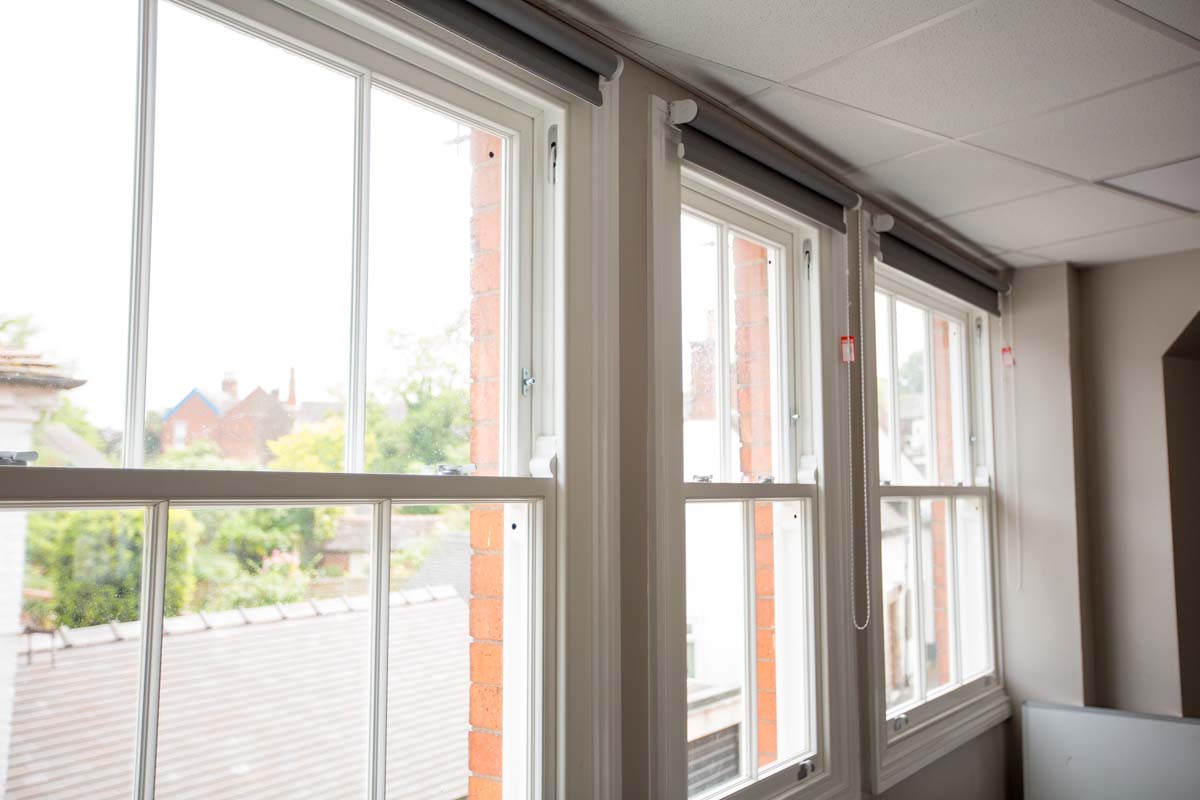What are sash windows?
Sash windows are vertically opening windows generally associated with traditional architecture and design.
A sash window consists of two framed window sashes – one positioned in front of the other. This is more specifically referred to as a sliding sash window. These windows units sit in frames with vertical grooves that allow them to move up and down smoothly without any danger of one frame rubbing against the other and damaging it. The up and down movement of the sashed is assisted by counterbalances – weights on cords and pulleys. These counter balances can be hidden within the frame or exposed on the inside of the window.
Sliding sash windows do not have hinges and avail no outward swing, though some modern sash windows do tilt to assist cleaning.
What are Glazing Bars?
The glazed area of the window is made of smaller panes of glass joined together by horizontal and vertical wooden pieces called glazing bars. This creates the traditional English window effect associated with Georgian and Edwardian architecture.
Glazing bars were originally required because the glass making technology of the time was somewhat primitive. Windows were made by traditional glass blowing techniques. The pane of glass was made by blowing a cylinder which was then cut and rolled whilst still very hot. Because the panes of glass were only very small, big windows were made up of lots of smaller panes of glass joined together by the windows bars.
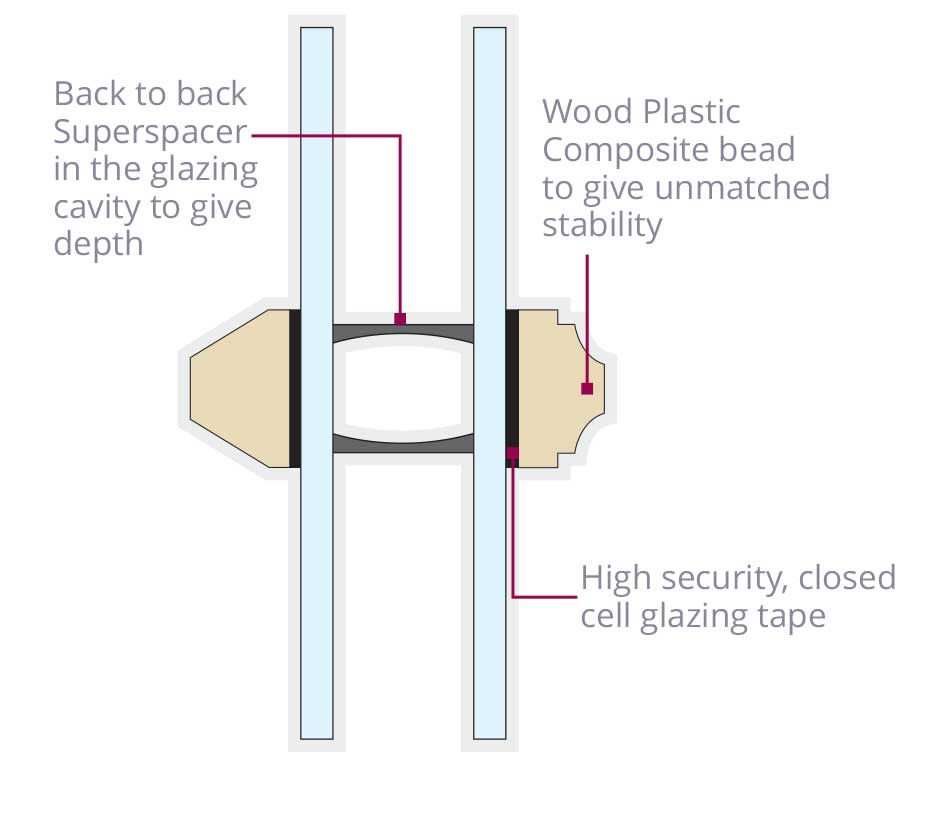
Modern glazing production of course allows for much, much larger panes of glass to me manufactured. However, it is still sometimes desirable (in the case of heritage windows – essential) to have ‘traditional’ looking windows. Modern sliding sash windows are built from single panes with the window bars laid over them to replicate the traditional appearance. Modern ultra thin double glazing, such as Vacuum Glazing, allows for the windows to appear like they are made from single glazed units with barely perceptible gaps between the inner and outer glazing bars. Some modern replicas only have the mock window bars on one side, usually the outside.
Benefits of sash windows
Traditional charm
Sash windows are charming and elegant, and are the very definition of the traditional ‘Olde English’ village. They evoke the feeling of times gone by and give a property an air of longevity. Sash windows are sometimes referred to as ‘the eyes of the façade’ and cannot fail to conjure up the image of a traditional English village or victorian Christmas card!
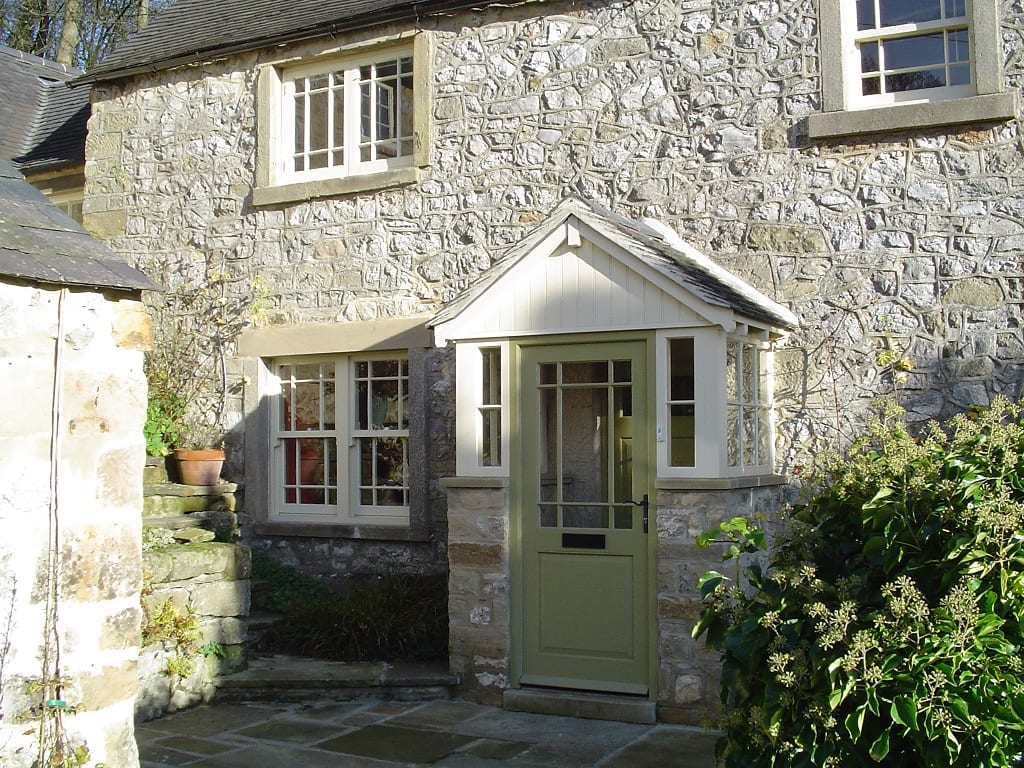
Sash Windows are perfect for homes in conservation areas
Buildings in conservation areas or that are classified as listed buildings may be required to install sash windows during renovation works. Known as Heritage Windows, these are specially designed to look as close as possible to the units the building would originally have had.
Upgrades to properties in conservation areas or listed buildings require special planning permission. Generally local authorities prefer repair to windows rather than replacement, Where repair is not possible, the planning authority will need to approve the window design. It is recommended that you work with a window manufacturer with experience in designing and installing authentic replacement Heritage windows. They will be able to help you get the necessary permission to proceed with your project and will have a line of heritage window products that will have passed previous application, making your application process much easier.
Sash Windows offer better ventilation
Because sliding sash windows can open at the top and bottom at the same time they provide excellent ventilation. Having an aperture at the top and bottom creates a convection flow of air that will cool a room wonderfully in the summer. This convection flow will not only cool and aerate your home, but it will also help remove dust.
Because they do not have hinges, there is no danger of the wind slamming the window shut.
Types of Sash windows
There are three types of sash window design. Which one you choose will depend on what suits your home best, and which period your home was built in (or designed to imitate).
Georgian

Georgian sash windows are built from two window units each with six panes of glass – referred to as ‘six over six’.
Victorian
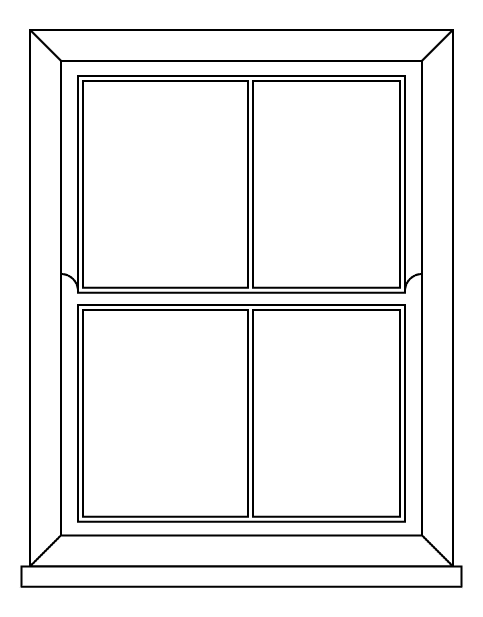
Glass making technology had advanced in the Victorian era, and it was possible to manufacture larger sheets of glass. Victorian sash windows are therefore characterised by having a ‘two over two’ design. Each unit is made from two panes of glass joined together by a single vertical glazing bar.
Edwardian

Edwardian sash windows typically have a ‘six over two’ design.
After the Victorian era the Edwardian architecture was all about opening up space in buildings. Windows were much larger, with floor to ceiling windows being commonplace to allow as much light into rooms as possible. To achieve this the lower unit would be made from two panes of glass – less window bars = more light. The top windows were made in the Georgian style of six panes – sometimes referred to as ‘Neo-Georgian’. Sometimes the upper windows were made of stained or coloured glass.
Sash window use declined after the Edwardian era, with easier to build steel or timber casement windows becoming used more and more after the First World War. Sash windows were still considered to be in vogue right up until the 1930’s, and have recently seen a resurgence in their popularity.
Yorkshire Sliding Sashes
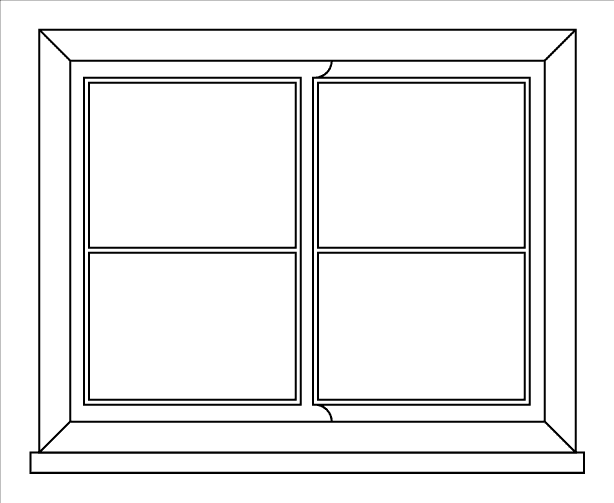
Yorkshire sash windows slide horizontally. One or both panes can open, and these windows are relatively rare.
Read more about the history of sash windows on Wikipedia.
What are sash windows frames made from?
Originally made solely from wood, windows frames are made from a variety of materials to suit all tastes, applications and budgets.
uPVC Frames
uPVC frames are usually made from coloured or painted plastic to emulate a wooden frame. uPVC sash windows can be quite efficient, although they cannot be recycled.
Aluminium Frames
Strong and durable, aluminium frames provide excellent protection and durability. More expensive that uPVC, they are recyclable and are expected to offer a long and relatively maintenance free service life. Aluminium sash windows are generally regarded as being less pleasing to the eye that timber framed units.
Timber Frames
There are a wide range of woods to choose from:
Pine: Cheap but not necessarily nasty, pine is an excellent choice from an aesthetic point of view, but can demand high levels of maintenance if a long service life is required.
Oak: The traditional English material, oak is hardwearing, strong and very beautiful. Windows made from Oak will last a long time and be very secure.
Red Grandis: A modern wood from sustainable sources in South America. Although a soft wood, don’t be fooled! Red Grandis is incredibly hard wearing and will give you a long and relatively maintenance free service lifetime, at the same time improving the security and efficiency of your home.
Accoya®: Accoya is another modern wood. Grown in New Zealand from sustainable sources and treated in the Netherlands, Accoya® is carbon neutral. The treatment process makes the timber incredibly strong and particularly resistant to moisture and heat expansion/contraction. This means that Accoya® will last a very long time, even in extreme locations such as under water. Like Red Grandis, Accoya® will make your windows very efficient and secure.
Can Sash Windows have Double Glazing?
Most modern sash windows are double glazed. There are different types of double glazing:
Standard Double glazing
With two panes of glass and a sealed cavity, standard double glazing offers much improved efficiency over traditional single glazed windows.
Slim Double glazing
In slim double glazing the cavity is filled with an inert gas such as Krypton or Xenon. The gap between the two panes is much smaller – around 5 – 6mm compared to a gap of around 16 – 20mm in standard double glazing. Slim double glazed windows are much more efficient that standard units and much more pleasing to look at.
Vacuum Glazing
The next technological step up from slim double glazed windows is the use of Vacuum Glass. The cavity between the two panes is, obviously, a vacuum. Because there is literally nothing there, and you can’t have more or less of nothing, the gap is incredibly small – around .06mm. Vacuum glass offers the highest levels of heat and sound efficiency.
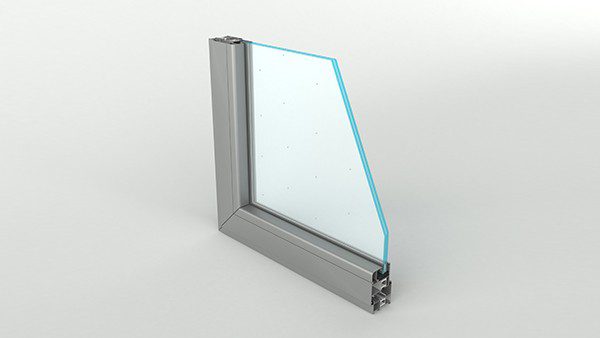
Sash Windows Cost
The cost varies depending on the materials used, the size of the windows and the quality of the manufacture and installation process.
Cheap softwood fames cost anything from £500 per window. Quality items that offer much longer service life, less maintenance and vastly higher levels of efficiency, security and environmental accountability will be much more, but are definitely worth the extra expense. Quotes are not generally available without a thorough inspection and site survey and most manufacturers would not offer sash window replacement costs without having all the data in front of them.
Hopefully, this post has helped you answer the question – ‘What are sash windows’.
Find out more about our range of timber sash windows.

